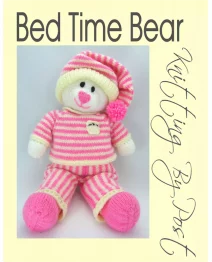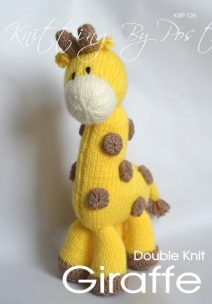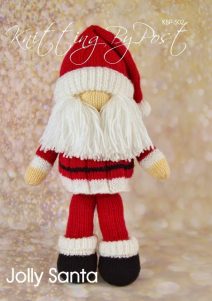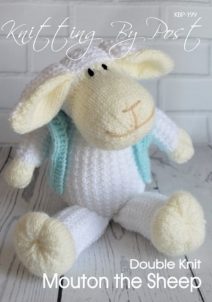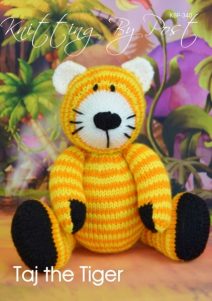Techniques
What is a Knitting Pattern?
A knitting pattern is simply a set of instructions for a hand knitter to use so she can recreate an item such as a garment or toy.
The craft of hand knitting is an act of taking two needles and yarn and creating an item or part of an item and creating stitches in various quantities and combinations.
A knitting pattern is like a recipe in that it has a set of ingredients and a method section. The ingredients will typically tell the knitter what kind of knitting needles are needed and what kind of yarn as well as a quantity. There will also be a list of other materials such as toy stuffing if they are needed.
It may be tricky at first when initially looking at a pattern and it may seem overwhelmingly difficult to understand. Taking the instructions a bit at a time and picking a simple knitting pattern to learn first will help.
What does a knitting pattern look like?
A knitting pattern can come in two media formats. Knitting leaflets, booklets and books are physical copies of the information needed to make a knitted item. They will typically have a photograph of the completed item and assembly photographs of the item in pieces if needed. There will be a written section of the information you need to know such as abbreviations and yarn requirements and then the instruction themselves.
A knitting pattern can also come in a downloadable or electronic version. This will include the same information but in a way that can be read on an electronic device such as a tablet or phone and could also be printed by the end user.
What Do I Need to Start Knitting ?
At the start of the pattern there will be a section dedicated to laying out what is needed to get started, including materials and knitting needles. There will also be a section on the knitted tension needed to get the desired results. This is especially important if making garments but not so important with toys.
Abbreviations are used to make the pattern shorter and able to fit into a reasonable space on paper. These will also be explained at the start of the pattern. Abbreviations are helpful so the knitter can follow the pattern. An example would be “k2tog” which means knit 2 stitches together. There may be the need to do this hundreds of times in a pattern so abbreviations are used to keep the text short.
Some knitters are known to take a knitting pattern before it is made and re-write the abbreviated sections out in long hand on a piece of paper in a way that is easier to follow for that person.
Abbreviations are also explained at the top of the knitting pattern before coming to the method section. A general assumption is made on a knitting pattern that the knitter knows how to produce a knit stitch and other combinations of stitches as the pattern will not explain how to do this, only that it needs to be done.
Ther isn’t any standardised set of abbreviations and it is up to the knitting designer to define their abbreviations on the pattern so it is clear what is to be done. That said, generally the knit stitch is “k” and purl stitch is “p”
How Do I Start to Knit?
If your pattern is written, (and not a chart) the method part of the pattern provides instructions on each component part of the finished item. The section is followed sequentially from top to bottom. At the beginning it will tell the knitter how many components to make. For example it may say “Arms – Make 2”
The first line of instructions will typically tell the knitter how many stitches and what yarn to use. The act of starting knitting is called casting on. The knitting pattern may say “With pink yarn, cast on 50 sts”
How do I Knit the Pieces?
The knitter then takes the yarn and begins the process of casting on. The instructions will then continue and the knitter can follow them to create the knitted piece required. The next row may contain a combination of knit and purl stitches, just knit or just purl or something else. The pattern will explain what comes next.
A written knitting pattern may include brackets or braces “(” and “)” to show that a section is to be repeated. This is another method to keep a knitting pattern short and easy to read. There will be an indication after the brackets how many times it has to be repeated. For example it may say (k1, k2tog) 6 times. Meaning that both the k1 and k2tog has to be repeated 6 times in the row.
At the end of a knitted row, if the number of stitches changes, the pattern will give you a count of how many stitches you should have left. For example, it may say (30 sts). This means after the row is completed there should be 30 sts remaining.
At the end of knitting a piece the act of casting off is done. This is taking the remaining stitches on the knitting needle and binding them so they cannot unravel after they are removed from the needle. There are lots of ways that this can be done.
This itemised process is repeated for all the pieces required on the pattern by following sequentially the instructions.
What is a Knitting Chart?
Knitting charts can be included in the instructions or a chart may be provided as the only instructions and needs to be followed. A chart consists of a grid with a number of squares going horizontally from left to right and back again to create a pattern in the knitting or provides details of colour changes.
A chart is followed backwards and forwards as the item is knitted and after each row of knitting the next row on the chart is knit in the opposite direction. The pattern will say how many times this is to be repeated over a row or section. Charts are especially useful if knitting argyle items.
The letters or symbols or colours will be defined in a separate key to make it possible to follow.
How do I Sew Knitted Pieces Together?
Some knitting patterns will have assembly instructions as you go and some will leave it to the end. The instructions are generally written in English and long hand (without abbreviation) but it may be brief and the knitter will again have to use their skill to sew up at the end.
Even More Patterns
Knit the perfect bedtime buddy! This soft, snuggly bear is easy to make and perfect for little hands to cuddle. A great gift idea or a sweet addition to any handmade toy collection
This product has multiple variants. The options may be chosen on the product pageFour Favourite Easy Candy Toy Knitting Patterns in One Booklet.
This product has multiple variants. The options may be chosen on the product pageKnit a giraffe that won’t outgrow your home. This adorable long-necked friend is a great soft toy project for animal lovers.
This product has multiple variants. The options may be chosen on the product pageHo-Ho-Ho. It is Christmas Season Now With a Very Jolly Santa Knitting Pattern
This product has multiple variants. The options may be chosen on the product pageKnit the coolest sheep in the flock! Mouton the Sheep comes with his own hoodie, making him a fun and quirky soft toy project.
This product has multiple variants. The options may be chosen on the product pageEnjoy this lovely tiger soft toy knitting pattern. This tiger has a cheeky face and cute little ears. He is very sweet.
This product has multiple variants. The options may be chosen on the product page



